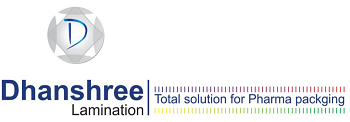OUR SERVICES
PROMOTIONAL PRODUCTS
A professional wanting to get the word out about their company shouldn’t show up to a promotional event with boring brochures and business cards. That’s a good way to get laughed out of the trade show. A Promotional products help your business gain impressions and build loyalty.Churches, sports teams, and schools can also use promos for fundraisers and other events.
TAGS & LABEL PRINTING
A label printer is computer printer that prints on self-adhesive label material . A label printer with built-in keyboard and display for stand-alone use (not connected to a separate computer) is often called a label maker. Label printers are different from ordinary printers because they need to have special feed mechanisms to handle rolled stock, or tear sheet stock.
MULTICOLOR OFFSET PRINTING
Multicolor technology from Heidelberg covers up to 95 percent of the Pantone® color space with the conventional CMYK process colors and the three additional colors orange, green, and violet — and does so to perfection. Dispensing with separately printed spot colors and software-based mixing of the desired color tones opens up enormous potential for savings, particularly in packaging printing.
LASER PRINTER
A laser printer is a popular type of personal computer printer that uses a non-impact (keys don’t strike the paper), photocopier technology. When a document is sent to the printer, a laser beam “draws” the document on a selenium-coated drum using electrical charges. After the drum is charged, it is rolled in toner, a dry powder type of ink. The toner adheres to the charged image on the drum. The toner is transferred onto a piece of paper and fused to the paper with heat and pressure. After the document is printed, the electrical charge is removed from the drum and the excess toner is collected.
SCREEN PRINTING
Screen printing is a printing technique whereby a mesh is used to transfer ink onto a substrate, except in areas made impermeable to the ink by a blocking stencil. A blade or squeegee is moved across the screen to fill the open mesh apertures with ink, and a reverse stroke then causes the screen to touch the substrate momentarily along a line of contact. This causes the ink to wet the substrate and be pulled out of the mesh apertures as the screen springs back after the blade has passed.
3D PRINTERS
3D printing or additive manufacturing is a process of making three dimensional solid objects from a digital file.
The creation of a 3D printed object is achieved using additive processes. In an additive process an object is created by laying down successive layers of material until the object is created. Each of these layers can be seen as a thinly sliced horizontal cross-section of the eventual object.
3D printing is the opposite of subtractive manufacturing which is cutting out / hollowing out a piece of metal or plastic with for instance a milling machine.
3D printing enables you to produce complex shapes using less material than traditional manufacturing methods.
The creation of a 3D printed object is achieved using additive processes. In an additive process an object is created by laying down successive layers of material until the object is created. Each of these layers can be seen as a thinly sliced horizontal cross-section of the eventual object.
3D printing is the opposite of subtractive manufacturing which is cutting out / hollowing out a piece of metal or plastic with for instance a milling machine.
3D printing enables you to produce complex shapes using less material than traditional manufacturing methods.



